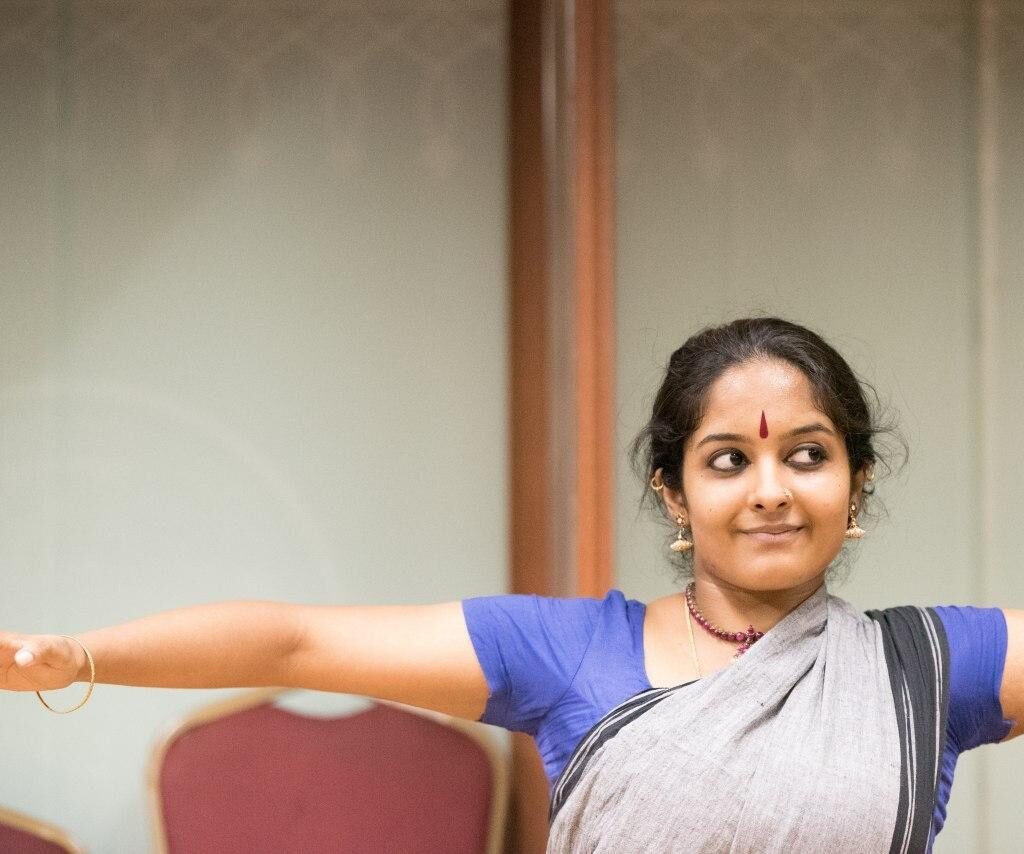Dance to live; Live to dance

“Hey, are you free to hang out this weekend?”
“No, I can’t sorry, I have dance class.”
When I was younger, it would bother me that my friends used to hang out with each other so often while I was stuck in class. Yes, I was excited to dance. Yes, I enjoyed it – but being involved in the traditional arts was not necessarily common and I often felt left out – as a teenager, my priority leaned towards feeling like I belonged with my friends. My friends would laugh and reminisce about all the things they did together over the weekend and I smiled along as though I was there.
Looking back, I feel foolish for feeling that way. Dance is an integral part of me and is at the root of how I define myself. Having learnt Bharatanatyam from the age of 5, this artform has become more than just a hobby. My relationship with it has transcended from passion to friendship; one that I can share all my emotions with and responds to me with abundant affection.
And no, I am not alone on this venture. Over the last 10 to 15 years, the support Singapore has begun to provide the arts has increased tremendously. The National Arts Council (NAC) views the traditional arts as an avenue for Singaporeans to “explore their roots and achieve a deeper connection with their communities”. As someone who prides on her love for the arts, this direction taken by the Singapore government gives me hope that individuals of varied interests are given equal opportunity to explore their passion without being restricted to the academic path.
I recall my friend’s parents telling me that dance was distracting me away from important things. “If you keep dancing, when are you going to study?” That my academics were going to be affected because of attention was diverted. Statistics from NAC in 2017 show that the number of students engaging in arts related co-curricular activities has steadily decreased from 142,139 in 2010 to 118,985 in 2016. Most students are enrolled in tuition after school hours to continue working on their school work, with the focus being on boosting their grades.
What about holistic education? The role that extra-curricular activities play is to provide an alternative platform for a student to develop talent. Study International discusses in an article that employers seek candidates demonstrating soft-skills, a skill that the graduates of arts and humanities are generally seen to have, regardless of the job they are applying for. The arts allow an individual to use their mind creatively, creating greater possibilities for the things they would achieve.
Mr. Ong Ye Kung, Minister for Education shares with Today Singapore about the education system in Singapore. He views an academic degree as a means to open doors but believes that it should not be the only path to success considering that the youth have diverse talents, aspirations and passions. Growing up, I remember getting advice from different adults about the type of career choices I should make. Lawyer. Doctor. Engineer. Dancer was never an option I heard. The arts were always considered a subpar life choice that only people who weren’t smart enough settle for.
I wish I had known better at that time. I would have told them that the arts are not as easy as they think it is. It requires discipline, dedication, and determination. As a return for investing my efforts, dance has provided support for me both as a channel for religion as well as for my emotions. Through the range of abhinaya (facial expressions) that I explore when portraying various characters, I can express myself better.
My involvement in the arts has made me a more holistic individual. Exposure to the traditional artform keeps me in touch with my roots while living in a metropolitan city. Not everyone is fortunate enough to have that cultural background, especially with Singapore as an international hub, creating a melting pot of cultures. I believe that the traditions of the Chinese, Malay and Indian communities can come together to form a unique Singaporean culture that everyone can relate to. We must hold on to our roots and share them with one another.
I believe this value needs to be taught from young through the initiative of parents. Whether they choose to pursue it further is an individual decision that they can make when they are older, but much like a child is taught morals at a young age, the arts play the role of adding value to a child’s life through culture and tradition. Encouraging creativity from a young age cultivates comfort in expressing oneself, molding a generation of better communicators.
What do I do on weekends these days? I gladly spend my time dancing and sharing my love for dance with the younger generation, while continuing to discover the beautiful art form.
